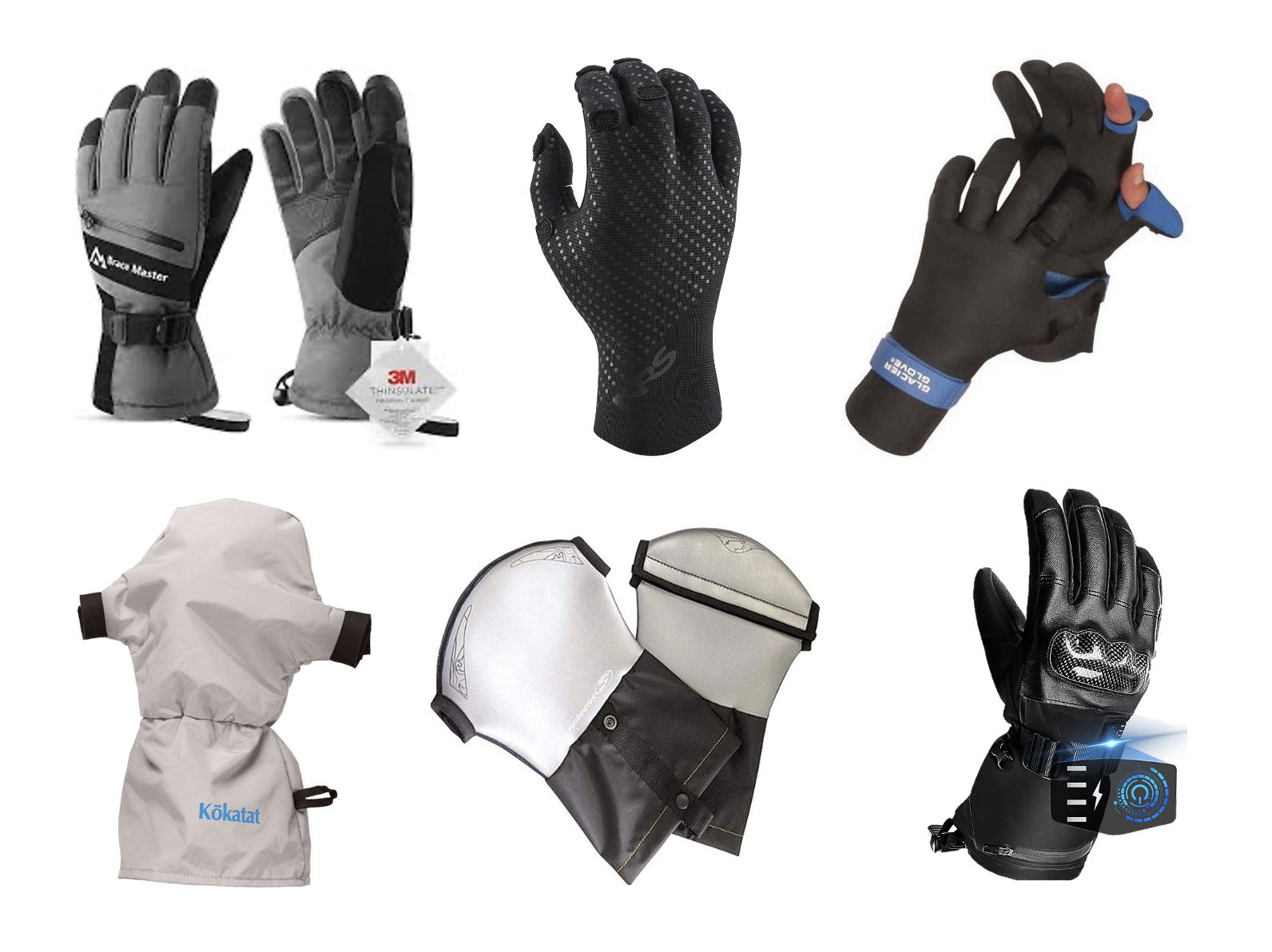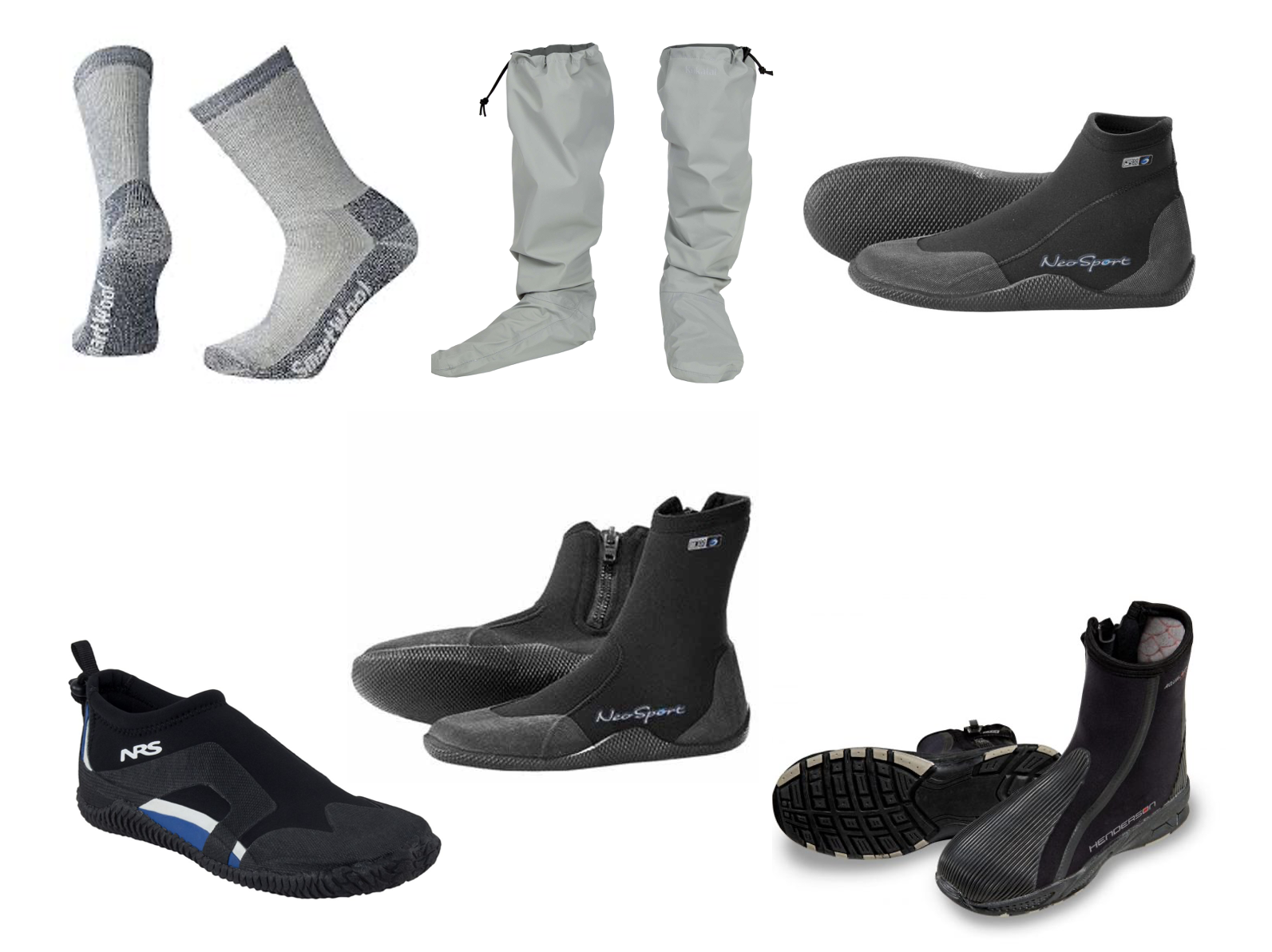What To Wear After Summer
What To Wear After Summer
The Hudson River was carved by glacier during the last Ice Age. The Ice Age is over and now humans paddle the path of the glacier. Warm blooded we are, we must take special precautions because cold water of any temperature can have a sudden effect on body and brain. Firstly, we use boats or boards that feel stable so as not to capsize. Even if you feel stable on a boat, always be prepared. This precaution is called “dressing for submersion.”
Always Wear a Life Jacket
Wear a Coast Guard approved life jacket in any weather or water temperature. We do not wear inflatable life jackets unless the water feels warm. The foam in a traditional life jacket keeps your head out of the water. We provide life jackets for you. If you want to use your own, order several models to find the right one. We prefer life jackets with less foam around the shoulders and more around the chest to maximize shoulder mobility. There should be adjustable straps along the shoulders and chest and secure pockets that fit your essentials.
Wet Suit Season: November 1st to December 15th / Water Temp 60-70F
Wear a wet suit, jacket and boots for paddling through cool water. We provide these 3 items for you. Many paddlers bring their own. Don’t wear anything that contains cotton. Bring a change of warm cozy clothing for after. This is what you should wear:
-
- Borrow our 3-4mm sleeveless wet suits. Underneath, wear underwear that is not cotton.
- Borrow our waterproof paddle jackets. Underneath, wear your own rash guard or synthetic long sleeve shirt that’s warm when wet
- Borrow our 5-7mm neoprene shoes. Underneath, wear your own synthetic or wool socks.
- A beanie that doesn’t contain cotton is always helpful.
Our favorite life jackets, wet suits and jackets. Clockwise from top left: NRS Ninja PFD; MTI Trident PFD; NRS Jane & John 3.0 Ultra wet suits; NRS Endurance splash jackets.

Dry Suit Season: December 15th to May 1st / Water Temp Under 60F
Wear a dry suit or semi-dry suit for paddling through cold water. They prevent water from getting to your under layers through water-tight gaskets at the neck, wrists and ankles. Full drysuits have gaskets made of latex while semi-dry suit use some neoprene too. Neoprene is less water-tight thus term “semi”. Semi-dry suits are more affordable and work when paddling with a group, not alone. Order your dry suit ahead from a reputable dealer who can handle repairs. Our members buy their own suits. Here are their recommendations. Want advice? Email us.
Recommendations From Our Members:
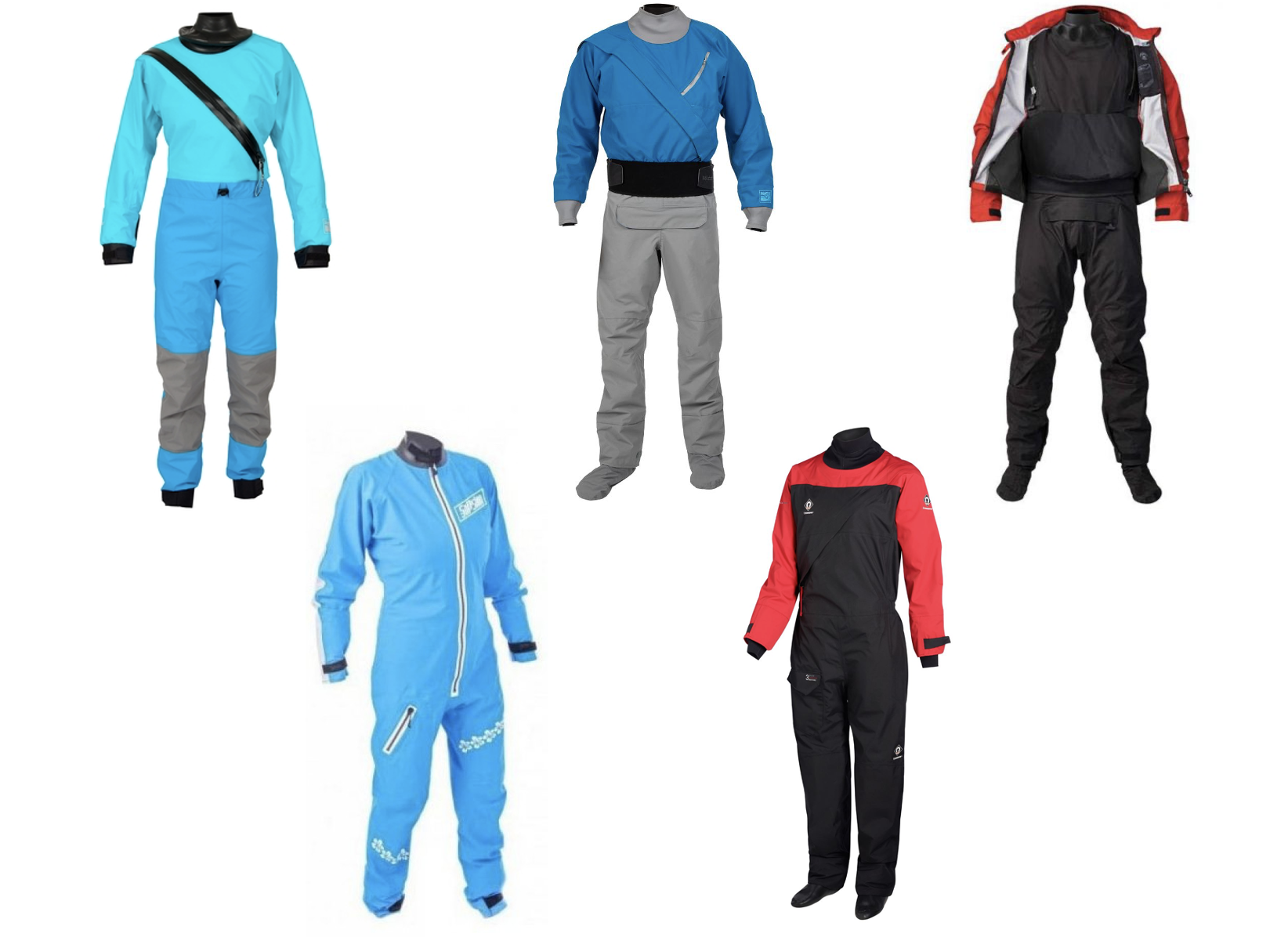
Our favorite semi-dry suits and dry suits. Clockwise from top left: Kokatat Swift Entry dry suit; Kokatat Meridian dry suit; Stohlquist Shift dry suit; Crewsaver Atacama dry suit; SUPskin Dynamic dry suit.
Comparing Wet Suits and Dry Suits
Hypothermia Risk: The most common 3-4mm wet suit does not offer enough thermal protection for cold water. A thicker 5-7mm wet suit with sleeves gives thermal protection but restricts movement. Sleeveless wet suits are not warm enough. Dry suits and semi-dry suits are the best to keep your body dry, allow for layers underneath and allow for a full range of motion.
Cost and Durability: Quality being equal, drysuits cost 2-3 times more than wet suits. Dry suits last 2-3 times longer than wet suits. If you plan to paddle for years, get a dry suit from a reputable maker who repairs zippers and gaskets. Zippers are vulnerable and need to be rinsed of salt water after each use and lubricated periodically. Dry suit gaskets can tear so take your time getting dressed.
Fit: Wet suits are tight, stretchy and porous. The same wet suit can fit varying bodies, albeit not perfectly. Dry suits are inelastic, impermeable and loose around the chest, arms and legs. Because of this, a tailored look is hard to get with a dry suit unless you have a well-proportioned body. If you have time and money, contact the manufacturer to get a custom-fit dry suit.
Bathroom: Being able to go to the bathroom easily is important. While surfers can go into their wet suits, paddlers have to hold it. Dry suits should have zippers around the waist for women and in the front panel for men. Do not get a dry suit that has only a chest zipper.
Undressing: After paddling, peeling off a sweat-soaked wet suit is unpleasant. With a dry suit, simply unzip it, step out of it, and find yourself in dry warm wool clothes!
Under Layers
Dry suits require layers underneath for warmth. Kokatat drysuits are thick and airtight, so be careful of over layering and sweating underneath. SUPSkin drysuits are thin so add several layers for warmth on cold days. These tops and bottoms are the best! If you choose real wool, remember to wash and store them in a sealed airtight container when the spring ends to prevent moths from devouring them.
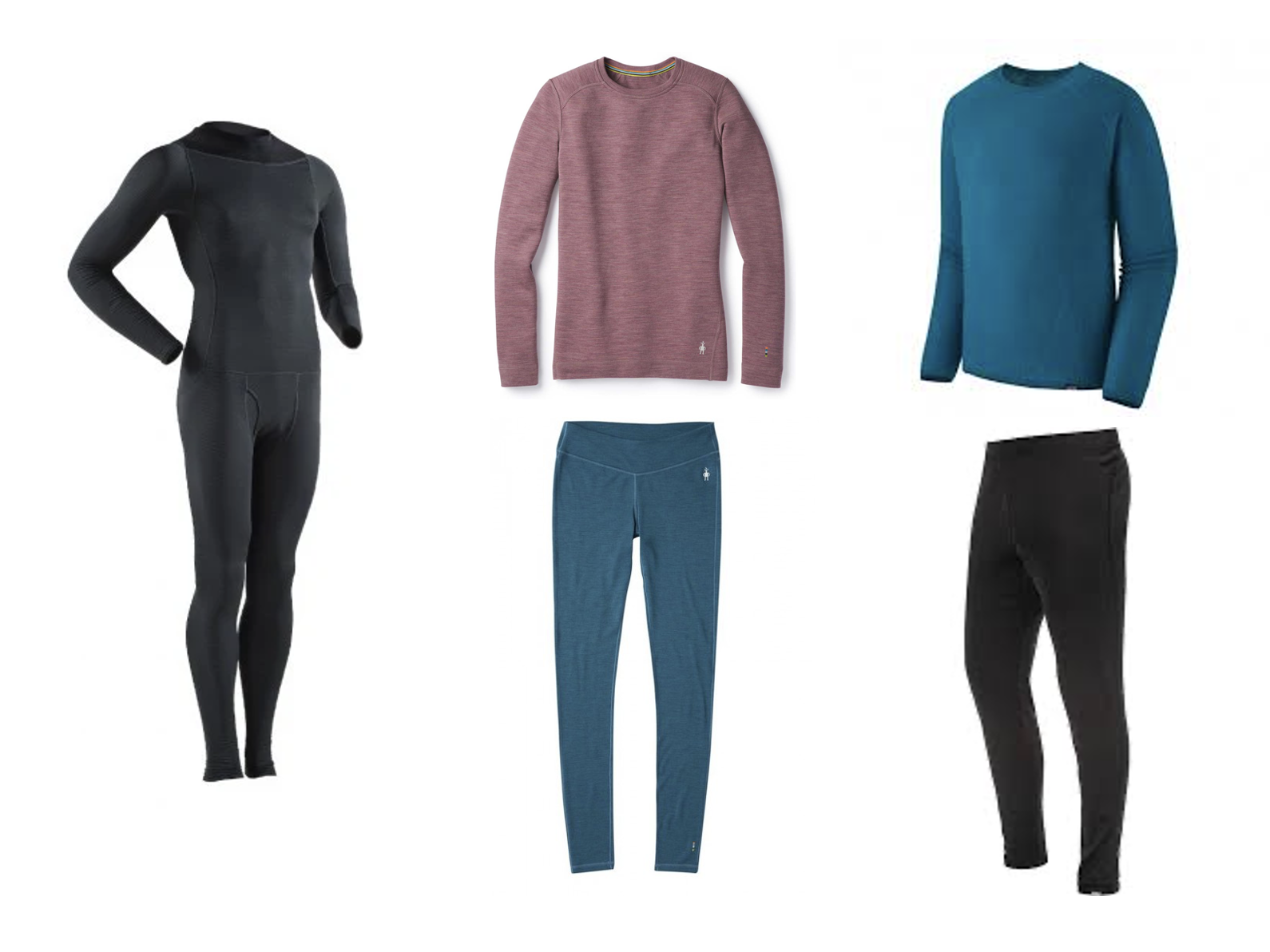
Layer under your dry suit. Clockwise from top left: Immersion Research Thick Skin top and bottom separates; Smartwool 250 shirt; Patagonia Capilene Air shirt; Decathlon Simplewarm bottoms; Smartwool 250 bottoms.
Handwear
Extremities can be quickly impaired by cold water. Kayakers do best with pogies, which keep water off your hands or kayaking gloves. GET POGIES! They Velcro around the paddle and create a warm cavity for the hands. Pogies remain attached to the paddle even when the hands let go. We highly recommend them for sea kayakers!
Paddle boarders move their hands to different parts of the paddle and cannot use pogies. SUPers face a challenge in terms of hand wear and usually settle for 1-1.5mm neoprene gloves for cold days. If the material is thicker than 1-1.5 mm, it needs to have a pre-curved finger. Otherwise, a straight thick glove will tire out your fingers from bending the material to hold the paddle.
Kayakers wear pogies and SUPers wear gloves. Clockwise from top left: Brace Master ski gloves; NRS HydroSkin Forecast 2.0 gloves; Glacier Gloves; Shaalek heated gloves; Stohlquist Toaster pogies; Kokatat kayak mitt.
Footwear
For winter, 7mm neoprene shoes with wool socks keep your feet warm even if they get wet. 3mm work for autumn only. 5mm booties can be too thin for winter if you run cold. 7mm is warm and cozy. Look for booties with a side zipper because they are easy to put on and take off. Cold water rinse and air-dry your booties or they will stink. We recommend wool socks to prevent smells and keep your feet warm. Bring extra socks for after. Note: We no longer recommend Kokatat dry socks because they’re not water tight or warm.
Wear neoprene shoes with wool socks. Clockwise from top left: Smartwool Hiking socks; Kokatat dry socks; NeoSport 5mm low top boots; Henderson Aqua Lock boots; Neosport 7mm high tops; NRS Remix water shoes.
Head Wear
For cold days, wear a fleece headband or hat with ear flaps. The brighter the better. Even if the day seems warm, have a warm hat because the cold air will take heat from your body.
Other Necessities
Use a 10-20L dry bag to store your energy bars or blocs, gloves, and hat. Calories mean heat, so eat your snacks as you paddle. Tether your waterproof phone case to your life jacket. On your boat deck, keep an insulated bottle or two. There is more equipment to bring on a paddle trip, but I will leave that for another blog.
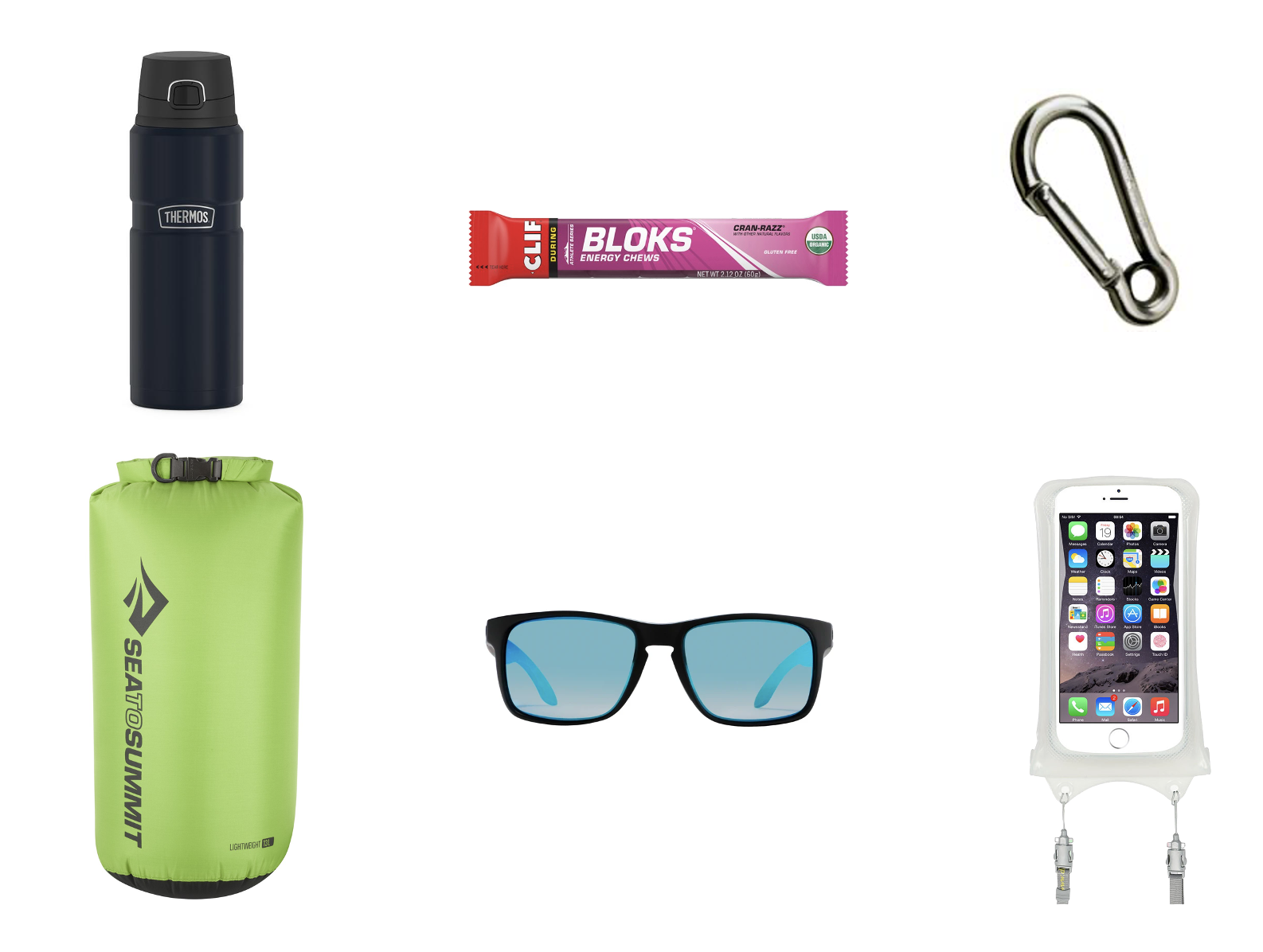
The essentials. Clockwise from upper left: Thermos 24oz Stainless King bottle; Clif Blok chews; Sea Dog 4-3/4” carabiner; AquaVault floating phone case; Rheos floating sunglasses; Sea to Summit Lightweight 13L dry bag.
Plan Ahead
When you get new gear, take it for a short paddle during a calm day and to a Rescues Training. Return or exchange gear that’s not working out. The earlier you get gear, the sooner you can go through a few iterations before the coldest days. With patience, you’ll find the prefect outfit and enjoy paddling through the fall, winter and spring!

